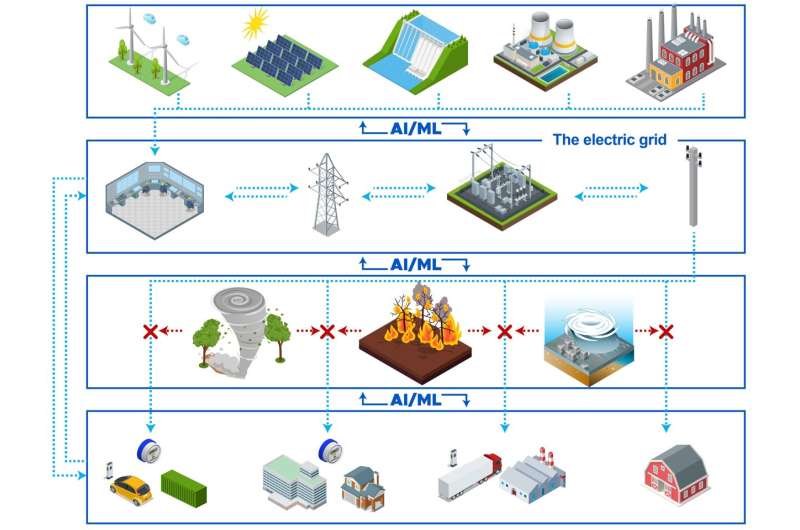
When we flip the light switch in our homes, we have come to expect instant access to electricity. Behind the scenes, that reliability depends on utility operators who have developed control systems and fail-safes to keep the power flowing.
But times are changing rapidly, and utility operators face an evolving electrical grid that has become a complex network of diverse energy sources, emerging grid energy storage options, and accelerating demand for electricity in transportation, computing, and industrial uses.
Faced with the challenge of electric grid modernization, many have called for supporting utility managers and operators with artificial intelligence (AI) and machine learning (ML) tools that can remove some of their decision-making burden.
Understandably, utilities are cautious about adopting new technologies when the consequences of failure are costly and could affect customers. Additionally, the benefits and business cases for these technologies are not yet clear.
Now, a research team led by Pacific Northwest National Laboratory has demystified their emerging role in the electric grid with practical advice. In a comprehensive report, the team points toward a time when ML can become a trusted partner for the nation's utility operators. As a branch of AI, ML uses mathematical models and real-world data to make decisions based on logic and prior knowledge.
"Electric utility operators are looking for tools that help them understand current system status, to predict what will happen in the future, and then present a recommendation to what kind of actions they need to take to prepare for that future," said Yousu Chen, a PNNL power-system modeling and simulation expert. Currently, he leads the Department of Energy's Office of Electricity Advanced Grid Modeling program at PNNL.
Chen and his team provide expert guidance that outlines the challenges and opportunities provided by ML to help manage an increasingly complex electric grid and describe some of the tools that have been developed.
Complexity rules the electric grid; machine learning can help us cope
For more than a century, the nation's electric grid operated with centralized energy production from coal, gas, hydro, and nuclear power stations. Today, that infrastructure is rapidly evolving to include a much wider variety of energy sources with different attributes, alongside much greater demand for electricity to power advanced manufacturing, transportation, and computing infrastructure.
Modern data management and computing strategies that include ML have shown promise to help manage our power grid, according to Chen and his colleagues. The biggest challenge to adoption in 2024 is confidence in the technology, Chen says.
As outlined in the full report, there are several challenges that must be thoughtfully addressed. They include:
Trustworthy answers: PNNL researchers took a close look at an ML algorithm applied to power systems. After training it on real data from the grid's Eastern Interconnection, they found the algorithm was 85% reliable in its decisions.
This is called a "confidence score," a value that reflects how confident the system is in its decisions. When the researchers put human experts in the loop, they saw a marked improvement over the system's assessment of its own decisions. PNNL researchers call the human-in-the-loop score an "expert-derived confidence," or EDC score.
Citation: Report points the way toward an electric grid that thinks ahead (2024, August 20) retrieved 20 August 2024 from https://techxplore.com/news/2024-08-electric-grid.html
This document is subject to copyright. Apart from any fair dealing for the purpose of private study or research, no part may be reproduced without the written permission. The content is provided for information purposes only.
